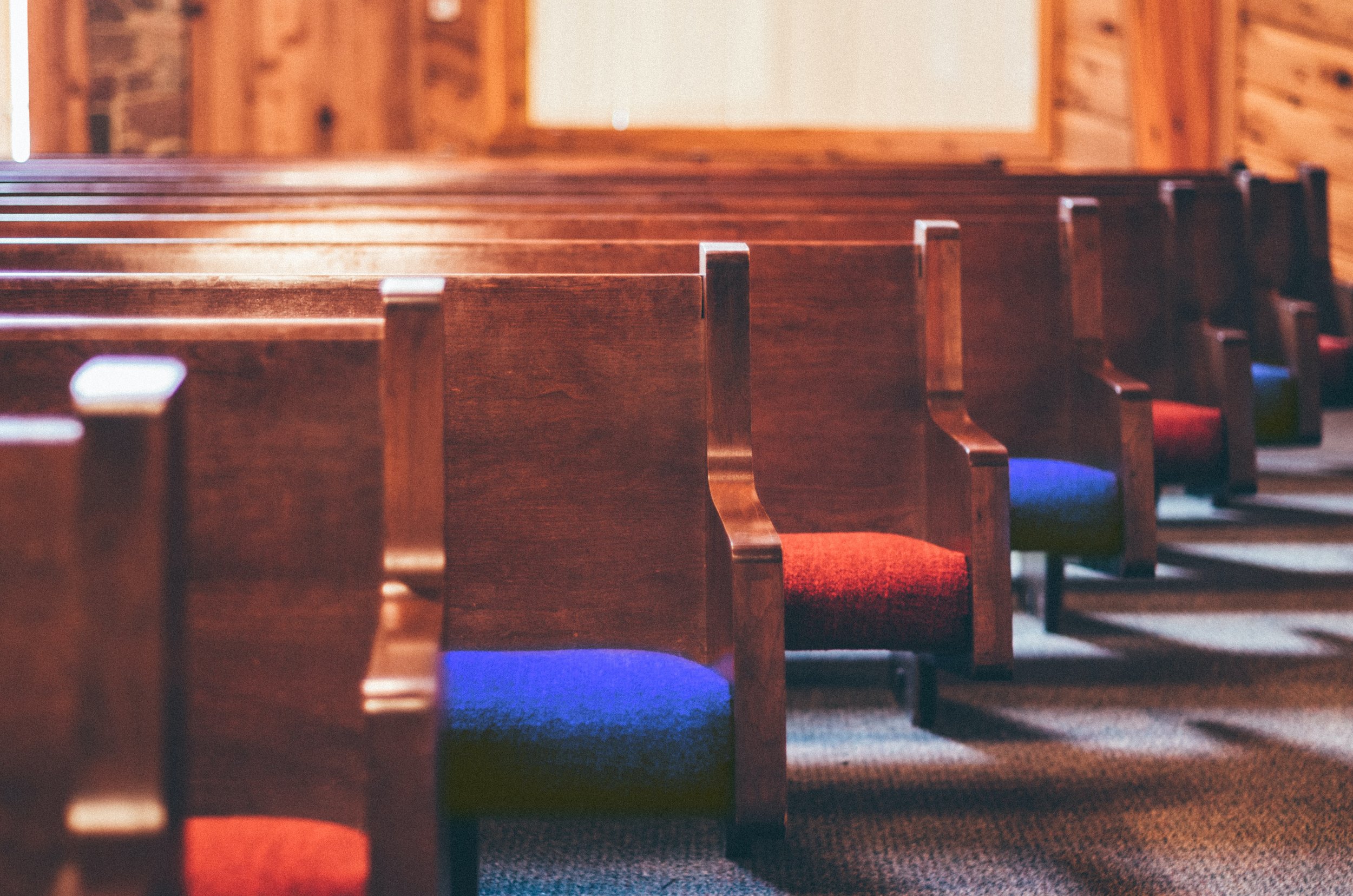Today’s Complicated Politics: Are Evangelical Pews ‘Red’ While More Pulpits Are ‘Blue’?
Original photo by Andrew Seaman
(ANALYSIS) Like everybody else, American religion writers are caught in a politics-drenched environment that for Republicans gets hot with the first debates Aug. 23 and Sept. 27 and presumably wraps up with the Ohio primary March 19, if not before.
Given the pertinence of the religion factor in U.S. politics, kudos to Yonat Shimron of Religion News Service for her piece last week spotlighting a significant article — “Clergy-lay political (mis)alignment in 2019–2020” — in the September issue of the international academic journal “Politics and Religion.”
The authors, Duke University sociology professor Mark Chaves and post-doctoral researcher Joseph Roso, set out to decide whether there’s a significant gap on politics between clergy leading local congregations and the lay members in each of U.S. religion’s four largest Christian niches — evangelical Protestant, mainline Protestant, Black Protestant and Catholic.
The conclusions are based upon reliable and representative sets of data (see the article for particulars), The Guy perpetually chides political reporters for neglecting Catholics, who are almost always the pivotal swing voters. But reporters, who must assess hyper-newsmaker Donald Trump’s prospects for nomination and election, will be especially interested in whether there’s a significant gap between the loyally Republican White evangelical clergy and laity.
Answer: No. Their pastors and lay members are overwhelmingly the same politically, and that’s also the case with Black preachers and parishioners. However, unity on conservative politics may or may not be the same thing as unity on a particular candidate.
Meanwhile, “misaligned” differences occur with Catholics and especially with mainline Protestants, whose pulpits versus pews gap has been a topic of lively conversation for a half-century.
Check out the article for the full numbers and analysis. All the findings are important, but here are some key ones:
* Mainline clergy by 53% estimated that they are “more” or “much more” liberal than their lay members, and 53% of Catholic priests said the same.
* Half (49%) of lay mainline Protestants who regularly attend church voted for Trump, compared with a mere 16% of their clergy.
* With Catholics, the Trump-voting gap was 49% for lay parishioners versus 24% among priests. (One might have expected clergy would be more avowedly Republican due to issues like abortion where Democrats differ.)
Those facts presumably say something about clergy impact on political thinking and mobilization in election years within these four groups. However, The Guy cautions that politicized Christianity, so heavily the business of selected national-level evangelical operatives with microphones, may be far less a priority for workaday local pastors.
Weeks after the 2020 election, GetReligion colleague Ryan Burge wrote in Religion Unplugged that Donald Trump’s evidence-free claim to victory exposed “a long-simmering divide in American evangelicalism between the elites” typified by, say, Christianity Today magazine, and millions of regular White worshippers (as opposed to minority evangelicals who vote Democratic).
“Almost no one is listening” to the church elites, he concluded.
The Duke duo now clarifies a three-way situation. Elite opinion is arrayed against the two other evangelical populations, lay voters in the pews and the local pastors, who largely agree with each other politically. Those elite thinkers and strategists built the evangelical movement starting after World War II by leading a vast network of denominations and their agencies, “parachurch” ministries and charities, colleges and seminaries. Many may have decided they need to keep mum on Trumpism, but very few have openly endorsed Trump’s words, deeds and campaigns.
Here’s one number that should not pass unnoticed. Reporters will well remember the chatter after 2016 exit polling showed an 81% evangelical vote for Trump (click here for Terry Mattingly’s backgrounder on that). The Duke article tells us that only 66% of evangelicals who regularly attend worship “at least monthly” said they voted for Trump in 2016. The notable difference here is between actual churchly evangelicals and those who chose that undefined identity when quizzed after voting.
Chaves (mac58@duke.edu, 919-660-5783) should be on everyone’s source list as director of the National Congregations Study, whose latest survey of a representative sample from local houses of worship provided data for the new article. Roso (joseph.roso@duke.edu) is the designated contact regarding this research.
Richard Ostling is a former religion reporter for The Associated Press and a former correspondent for TIME Magazine. He’s also worked in broadcast TV and radio journalism covering religion and received a lifetime achievement award from Religion News Association. This piece first appeared at GetReligion.org.

